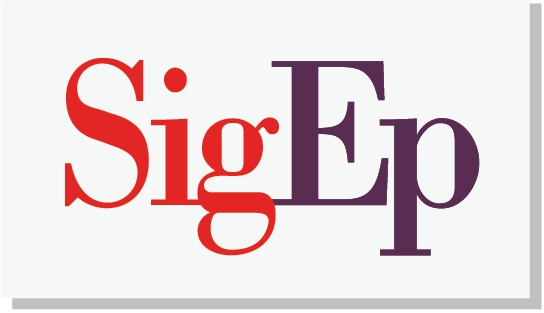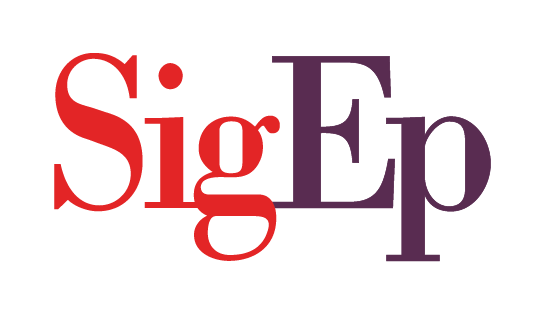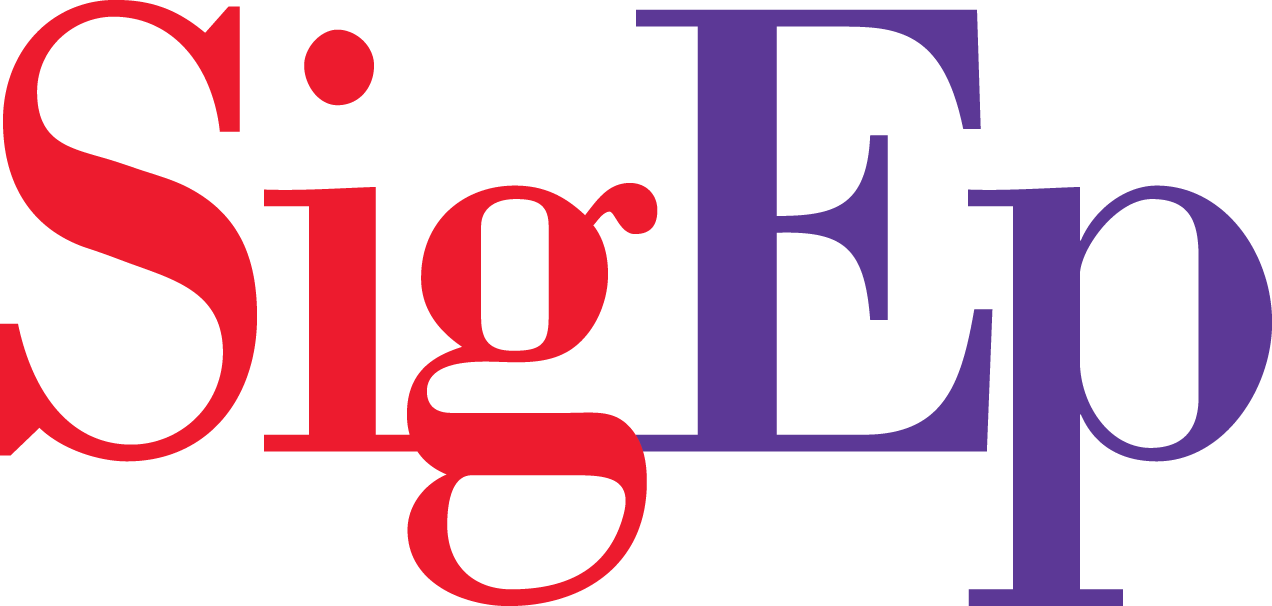A chorus of concern seems to be coming from business leaders around the United States. It’s a familiar refrain heard throughout the conversations of professionals and hiring managers in every line of business. It has everything to do with SigEp – college students are not prepared for professional life.
Competition for jobs is higher than ever, and the overall outlook is bleak. More students are going to college each year, while the national unemployment rate sits at 7.3 percent in August, 2013. For that same month, 14.4 percent of young men ages 20-24 were unemployed according to the Bureau of Labor Statistics. Studies from the Economic Policy Institute also indicate that college grads will earn less over the next 10-15 years than they would have pre-recession.
A survey by national recruiting firm Adecco indicates that a staggering 66 percent of hiring managers do not believe graduates are prepared to enter the workforce after college. Fifty-eight percent said they plan to hire no entry-level college grads whatsoever.
This outlook begs the question: what is SigEp doing to ensure its brothers are prepared?
 A group of New York City area alumni recently asked that question, and others, related to the professional development of SigEp undergrads. Adam Seiber, Murray State ’02, and Richard Podos, NYU ’85, started their conversation at a Life After College program in Spring 2012.
A group of New York City area alumni recently asked that question, and others, related to the professional development of SigEp undergrads. Adam Seiber, Murray State ’02, and Richard Podos, NYU ’85, started their conversation at a Life After College program in Spring 2012.
Life After College is a national program geared toward prepping men for next steps post-graduation. “We were getting ready to give a talk about LinkedIn and using the SigEp network, and we saw guys in mismatched clothes, carrying shoddy resumes, not able to articulate why they deserved a job,” said Podos. Seiber added, “Richard and I looked at each other and realized this thing was a bigger challenge than we knew.”
Looking closer at our chapters, they saw more of the same. “We realized we had a lot of work to do,” said Podos. A general lack of understanding defined the image of most graduating seniors in the minds of Seiber and Podos, both successful real estate investors in New York City.
“Unfortunately, that’s the common refrain coming from business people. Guys aren’t prepared,” said Podos. “And unless you have a job already lined up coming out of college, you’re in a very tough spot.”
The relevance of career development to SigEp
For Seiber and Podos, the need for this effort is rooted deeper than just finding SigEps jobs. Improving the way SigEp fosters career development is integral to retaining upperclassmen, engaging young alumni, and re-attracting alumni who are 20-30 years out of school. For example, Podos said, “I am proud to serve as a chapter counselor, but SigEp is leaving a lot of talent on the shelf if we don’t expand our appeal –career development is the natural space in which to do that.”
“I used to be a SigEp…how often do you hear that?” said Podos. In fact, fewer than one percent of living SigEp alumni are actively involved or engaged with the Fraternity in some way. “If we can get that changed, we can make some real progress,” added Seiber.
Retaining juniors and seniors is also a major hurdle that all fraternities are facing. “We’ve been discussing the retention issue for years, and no one has quite solved it,” said Seiber. SigEp sees a drastic decline in upperclassman membership each year. Of its approximately 16,000 undergraduates, only 6,900 are juniors or seniors.
“How many chapters are out there touting the SigEp network in recruitment?” asked Podos. “Career development is a way we can deliver on promises made early on in a members’ experience.” And what better way to retain juniors and seniors than to offer access to a network and development opportunities that translate into jobs?”
Seiber believes career development is key to SigEp remaining relevant. “How often have we talked about, or preached, that if fraternities don’t change they’re going to die?” said Seiber. “Career development is the way we change. It’s a way that other people can look in and say, ‘There’s a value proposition here.’”
The power of LinkedIn
Building on their conversation in the spring of 2012, Seiber and Podos began delivering a series of career development sessions at New York- and Philadelphia-based chapters, including NYU, Stevens Tech and Villanova. “We wanted to get out there and just start doing something,” Podos said.
The presentations focused on the simple things guys could do to utilize the SigEp network and eventually get a job. A lot of it begins with LinkedIn.
LinkedIn was a big jump starter for Podos and the career development effort. “I kind of got obsessed with LinkedIn for my company, Lance Capital. I saw more and more SigEps popping up at major companies.”
Podos eventually discovered that there are over 50,000 SigEps on LinkedIn, and those are just the ones we know about. Over 4,500 SigEps are represented at 180 of the nation’s top corporations. The statistics include over 170 SigEps at Bank of America and over 100 at each of Deloitte and General Electric.
This information, along with specific action steps to utilize LinkedIn, like advice for joining groups and drafting postings, make up some of the content in the Seiber and Podos career development presentation. They also include ways chapters can start incorporating career development in their member development program.
Seiber and Podos, along with other interested alumni, eventually developed a thesis: “SigEp should be a major driver of career development to help get deserving brothers jobs where they want.”
Podos has built his SigEp network into over 500 connections, actively posting and interacting with SigEps on LinkedIn. Then, something interesting happened. “In two separate ‘batches,’ one in November 2012 and the other in June 2013, a large number of seniors personally reached out to me on LinkedIn,” said Podos. “They were either going home for the holidays or graduating, freaking out because they didn’t have jobs and had done no career development.”
Seiber and Podos see this as another example of the urgent need for career development through SigEp.
The effort grows
The effort in the Northeast got noticed in chapters as far as Florida. Robert Grimal, Florida International ’13, saw what Seiber and Podos were doing on LinkedIn and asked Podos if he could adapt their presentation content to deliver to his own chapter.
“I saw such a problem with the way we utilized, or didn’t utilize, our alumni,” Grimal said. “I delivered the presentation, and I had about 55 LinkedIn connection invites the next day.” He also gave the presentation to about 20 potential new members, all of whom joined the chapter.
Grimal credits the presentation for sparking a wake up call in his chapter. “We were so used to asking the alumni for material things like money or new furniture,” he said. “Now we ask them for their knowledge and connections to the professional world.”
Through Grimal’s efforts, the chapter has incorporated career development into its Phi Challenge, and makes alumni a part of everything they do. “We invite alumni to our philanthropies or just out to eat. They want to be a part of it and get to know us,” he said.
Concept: “Reference-ability”
Another major driver in the need for career development is a concept Seiber and Podos call ‘reference-ability.’ The idea is that the vast majority of alumni will not simply give you an internship or job just because you are a SigEp.
“Someone who your audience cares about has to know you and recommend you,” said Podos. “No one will put their personal reputation in jeopardy if they don’t somehow trust that you’ll do a good job.”
They’ve even added to an age-old phrase – ‘it’s not what you know, but who you know…and what they know about you.’ This amplifies the need for undergrads to have results and experiences that they can speak to, with trusted alumni there to vouch for them.
What you can do
“We’re positioned better than any other fraternity to make career development happen,” said Seiber. “Number one, we’re huge. In addition, countless alumni leaders at the local and national level over the years have done the hard work of reconnecting SigEp with its values after a period during which most, if not all, fraternities struggled to live up to them. So, we’ve set ourselves up to tackle the challenge.”
So what can you do now as an undergraduate, volunteer or interested alumni?
According to Seiber and Podos, it’s as simple as starting the conversation in your chapter about career development. “Put it on the agenda,” said Seiber. “Undergrads and alumni should first answer the question: ‘how can we help?’”
Making career development a regular part of Alumni and Volunteer Corporation meetings, member development planning and conversations with alumni will plant the first seeds.
“Start recruiting people outside the chapter,” said Podos. “Build an appetite for this within your chapter.”
Podos has seen the potential on a national level. “By virtue of the large SigEp network, we have performers. We are everywhere. We just have to find a way to tap into them on behalf of the undergrads,” said Podos.
This topic is important to Seiber and Podos, because it is such an integral part of the way SigEp moves forward.
“To me, SigEp is a way to change the lives of tens of thousands, hundreds of thousands of men. We absolutely need career development in SigEp, because it’s a way you can change the course of our entire society and country for the better,” said Podos.
Added Seiber, “For SigEp, getting rid of hazing was the biggest insight in a long, long time. This is the next one. We can completely redefine it, again, if we tap into our collective potential.”
The army of career crusaders is growing. If you want to be a part of this mission, go to LinkedIn.com, search for Sigma Phi Epsilon Official, and post a message to these brothers.
Learn more about the who, how and why of managing Generation Y.











Leave a Reply